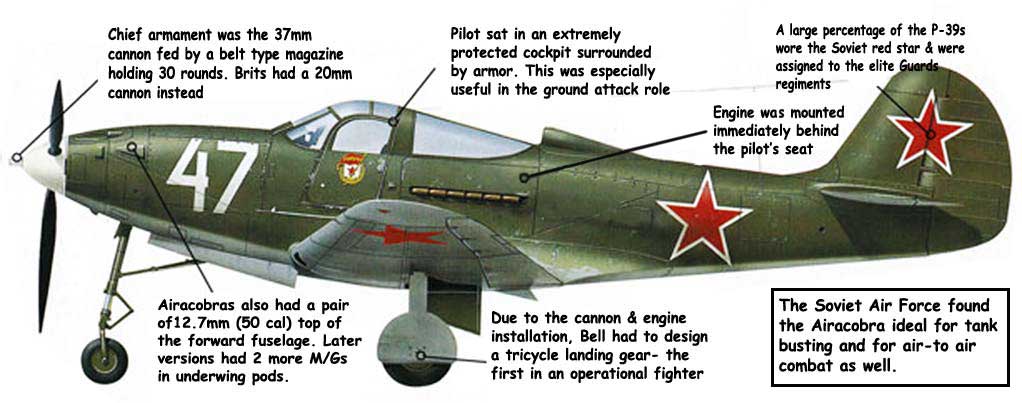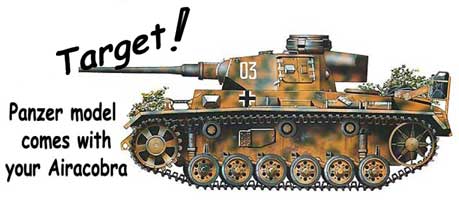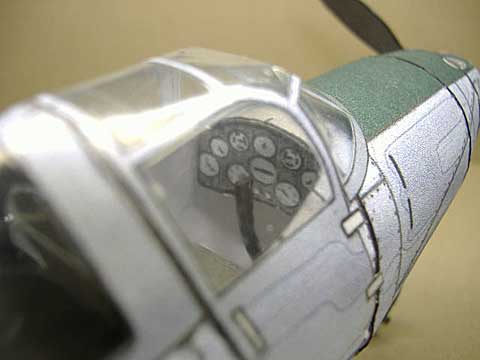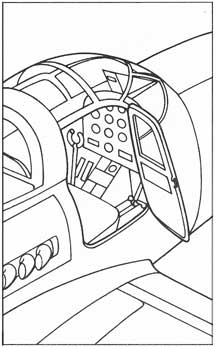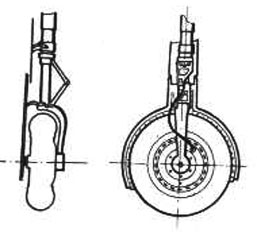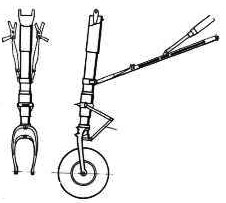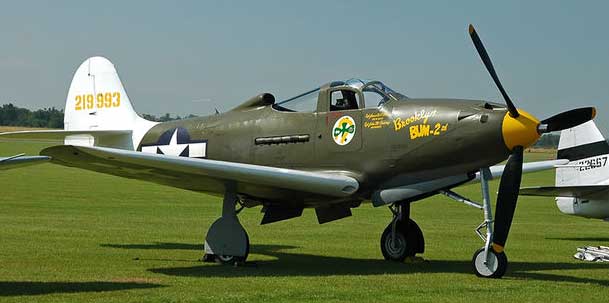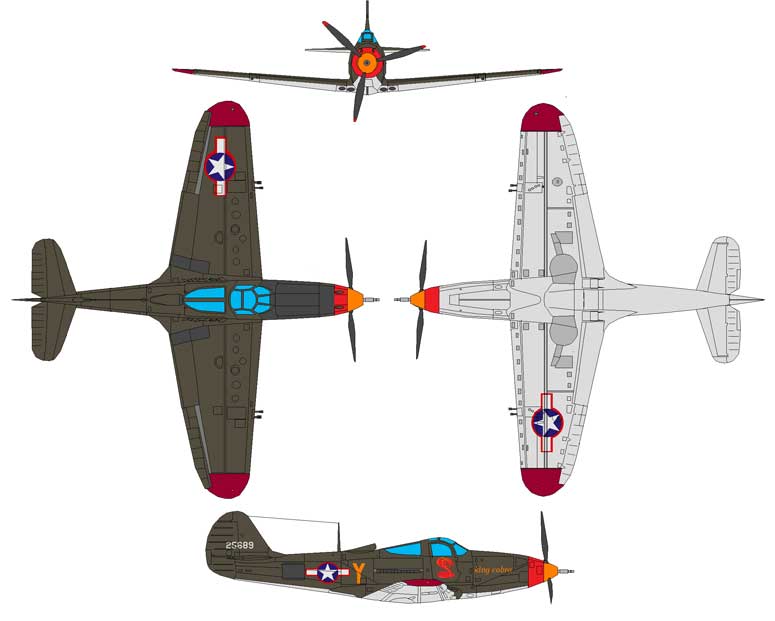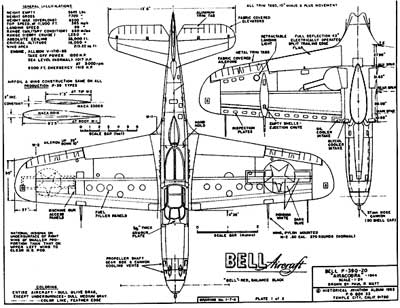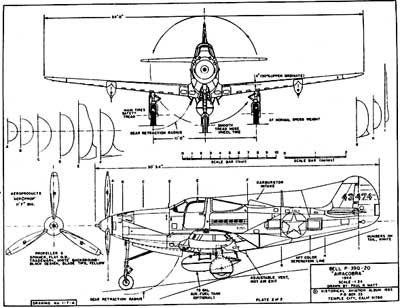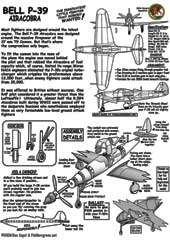

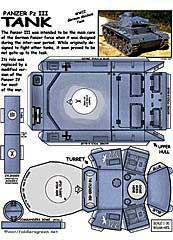

Bell-P39-Airacobra - $$8.50
The Bell P-39 Airacobra was one of the principal American fighter aircraft in service at the start of World War II. Although its mid-engine placement was innovative, the P-39 design was handicapped by the lack of an efficient turbo-supercharger, limiting it to low-altitude work. The P-39 was used with great success by the Soviet Air Force. Includes SIX versions and a Panzer Tank model to clobber with the (recently UN-classified!) FG spit-ball cannon.
Bell P-39 Airacobra-Downloadable cardmodel from Fiddlersgreen
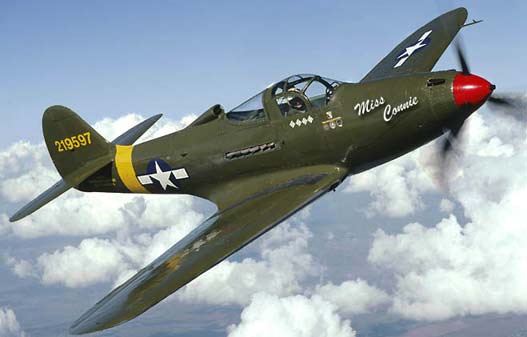
What People Say...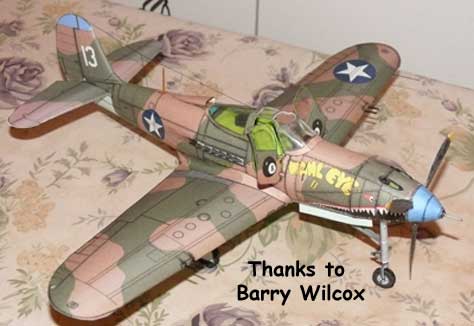
The Airacobra's one of my all-time favorite aircraft, and I can't wait for the release of the FG model. I do, however, have a nit or two to pick about the background info on the web site. It continues to perpetuate the myth of the P-39 as a Soviet ground-support aircraft .
Below 10,000 feet (due to that lack of a supercharger) the Airacobra made quite a successful fighter. The Russians had very good results with it as a fighter, not as a ground-support aircraft, since most air combat on the Eastern Front occurred below 10,000 feet. Pokryskin and his comrades racked up some pretty impressive scores over Me-109s and Fw-190s. Pokryskin flew his P-39 right up to the end of the war, in spite of the availability newer Soviet fighters like the LaGG-5 and YAK-3.
Most of the information on the Soviet experience with the P-39 has come to light since the fall of the old Soviet Union. There's more detail than most folks will ever want to read in D.F. Loza's book "Attack of the Airacobras: Soviet Aces, American P-39s, and the Air War Against Germany." A more general history can be found in the Osprey Publication "P-39 Aces of World War 2."
While no one will ever accuse the Airacobra of being in the same category as a Mustang, it deserves some respect as a successful fighter---not ground support aircraft--- in the hands of the Soviets.
Sincerely, YMP, Thom Brennan
I remember building the COMET stick and tissue model P-39 when I was a kid; looking forward to building Fiddlersgreen's version. Bob Penikas
These are the Bell P-39 Airacobra models that won the FG Modeling Madness (FGMM) 2010 best in class prize. |
|
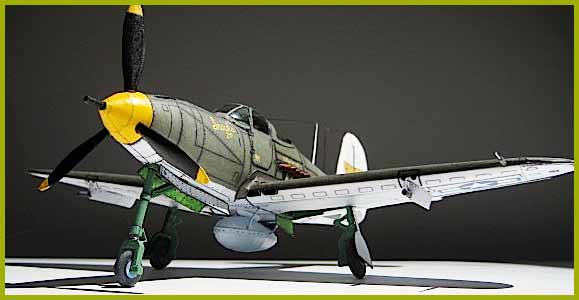 |
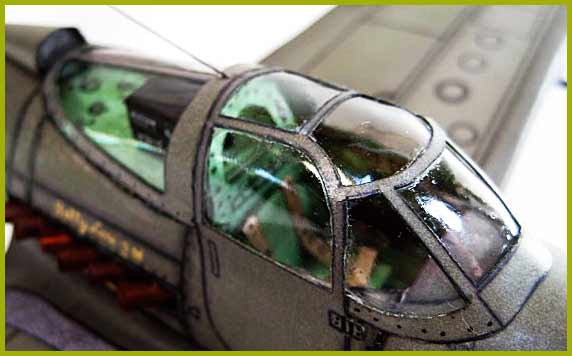 |
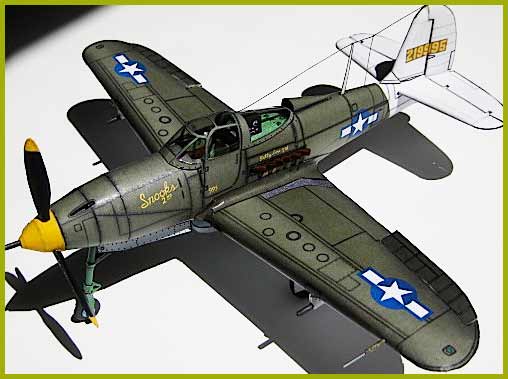 |
I choose to do a heavily modified version of this one. I like the look of the P-39 kit and it begs for detailing. If anyone is interested, here's the mods I made to the kit; -Clear, heat-formed canopy -Full interior (hand drawn!) -New exhaust pipes and fuselage recess -Extended spinner/ new 37mm gun barrel -Nose machine gun wells and barrels -New landing gear and wheels -Wheel wells -Separate flight surfaces -Pitot tube -Intake filter (can't really see it in the photos, though) -Belly fuel tank and mount -Repositioned and formed props -Wing machine gun pods -Open wing intake ports -Antenna wire -Additional rivets! I’m really happy with the way this one came out! - Chris |
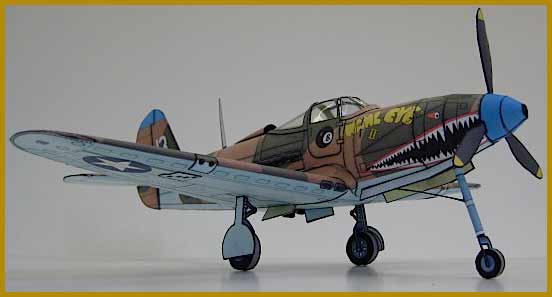 |
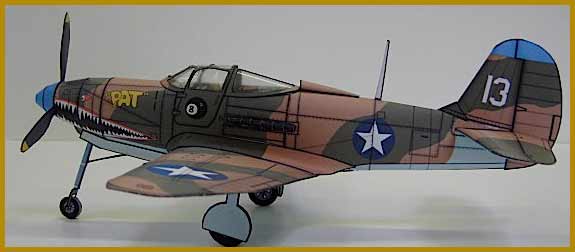 |
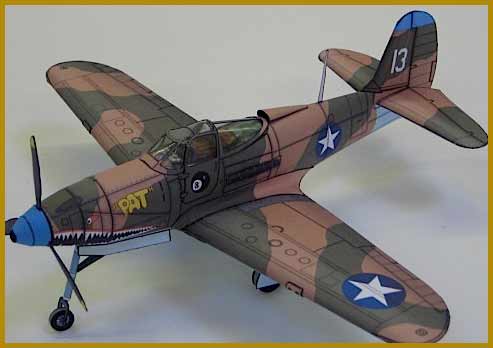 |
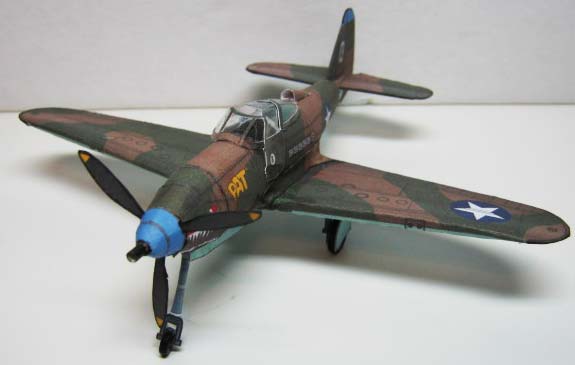 |
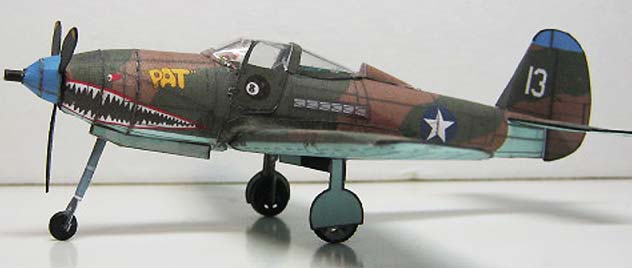 |
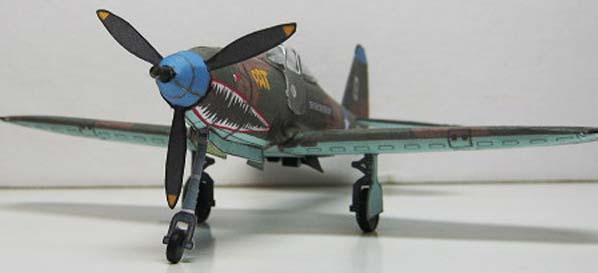 |
| FG has taken some liberties with the basic shape of the plane for the sake of simplicity and they've done a good job of it, as usual. The model comes out looking pretty decent and I appreciate the designer's ability to simplify the model and still get the essence of the prototype. This kit goes together easily and is a fun one to fly around the room! -Chris | |
Bell P-39 Airacobra WWII FIghter
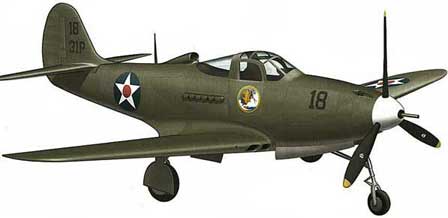 Bob Woods' second design for Bell resulted in one of the most controversial fighters of World War II: the P-39. What could be described as America's first "modern" fighter originally took shape on the drawing board as an interceptor but was developed as a close support aircraft in response to the USAAC's requirement in 1937-38 when there seemed little likelihood that the U.S.Army Air Corps would need a purpose-built interceptor. In 1941 this forecast was proved wrong and the P-39 was asked to fill a role for which it had not been developed. Predictably the plane failed to perform adequately, coming in for a good deal of harsh and, under the circumstances, unjustified criticism.
Bob Woods' second design for Bell resulted in one of the most controversial fighters of World War II: the P-39. What could be described as America's first "modern" fighter originally took shape on the drawing board as an interceptor but was developed as a close support aircraft in response to the USAAC's requirement in 1937-38 when there seemed little likelihood that the U.S.Army Air Corps would need a purpose-built interceptor. In 1941 this forecast was proved wrong and the P-39 was asked to fill a role for which it had not been developed. Predictably the plane failed to perform adequately, coming in for a good deal of harsh and, under the circumstances, unjustified criticism.
Way back in March 1937 Bell had submitted designs for a very aggressive fighter to the USAAC, with a top speed of 400mph at 20,000 ft which promised to be sturdier and more effective than any other aircraft on the market at that time. Woods had been most impressed by American Armament Corporation's new 37mm cannon and showed original thinking by sitting the engine in the very center of the aircraft, mid fuselage, to make room for the brand new and very powerful weaponry in the forward section: besides the 37mm hub-firing cannon and its ammunition there was also room for two synchronized .30in machine guns. Woods wanted the plane to be powered by a l,l50hp Allison V-l7lO-17 V-l2 liquid-cooled-engine with a B-5 turbo supercharger. The power plant was located behind the cockpit (access being by way of car-type doors on either side) and a three bladed propeller that was driven by a 10 foot long shaft underneath the pilot's seat with a reduction gearbox in the nose. This system would, according to Woods, ensure good maneuverability and precision aiming; his design incorporated a retractable tricycle landing gear with the central strut retracting into the nose and the two main wheels into the wings.
The P-39's semi-monocoque construction was all-metal and the leading edge of the all-metal trapezoid wing was curved. Rudder and flaps were metal laminate. The design promised the most efficient aerodynamics to date at the time of submission and in October 1937 the USAAC ordered a prototype, designating it XP-39. The aircraft flew for the first time at Wright Field, Dayton, Ohio on April 6 1938 with Jimmy Taylor at the controls. Lighter than its design weight as the armament had not been installed. With fuel tanks only part full, the aircraft managed a maximum speed of 390 mph at 20,000 ft and achieved an acceptable rate of climb to 20,000 ft in 5 minutes.
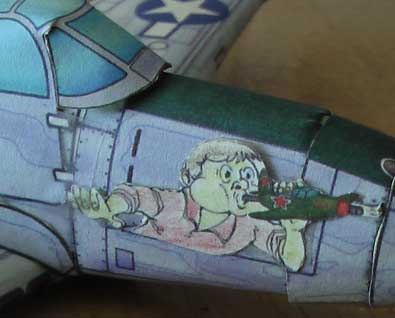 Modeln Pal Karl Reese cleverly lifted our little Russian kid from the model sheet and added it to his model Bell Airacobra as nose art. |
At this stage, even when making allowances for the fact that the plane's performance was bound to deteriorate when armed and carrying a full fuel load, it could still have developed into an effective interceptor but for the changes demanded by the USAAC after a series of test flights. These modifications had to be made before the military would place their order,,, a procurement for 12 pre-series YP-39s and one YP-39A (the latter for testing the l,l50 hp Allison engine for high-altitude flying) in the spring of 1939, The main changes, apart from a reduced wingspan and stretched fuselage, included thee resetting of the air inlets (from the side of the fuselage to the wing leading edge and dorsal positions) and, more importantly, the choice of the larger Allison V-1710-37 engine, without turbo supercharger. This engine was more reliable and more easily serviced but only performed well at low and medium altitudes.
So firmly convinced was the USAAC that high altitude capability was not necessary that all work on the YP-39A was halted. The modified XP-39, redesignated XP-398, had its maiden flight in November 1939 and although this test flight was also made without armament, it was immediately patently obvious that the plane's performance had deteriorated: maximum speed had fallen from 390 mph to 375 mph and its operational ceiling had dropped to 15,000ft now that the engine no longer had a turbo-supercharger.
While the relatively undemanding role of close support envisaged by the USAAC for their P-39 fighters made their acceptance of the aircraft understandable, it is less easy to justify the decision of the British Purchasing Commission to order these aircraft; by the time their order was placed, France had already ordered 200 and the British were well aware of the type of engine chosen to power the plane and were, presumably, capable of evaluating Bell's claims that the P-39 would make a good interceptor. Even after a scathing attack on the P-39,s performance had appeared in the authoritative British aviation journal "The Airplane" in March 1940, the Government not only took delivery of the French order (France having surrendered) but went on to order a further 475, to be designated Caribou. Whatever reasoning lay behind these decisions, when the first three P-39Cs sold on to the RAF by the USAAC and the first Airacobra I aircraft reached Britain (the RAF having meanwhile adopted the American name) in the summer of 1941, they were condemned as totally inadequate and unsatisfactory, markedly inferior to the Hurricane and the Spitfire. Apart from those significant design faults which could be remedied (compass malfunction after firing the guns since they were positioned too close to one another, exhaust fumes leaking into the cockpit, etc.), the Airacobras were far too slow, only just reaching top speeds of 358mph, handled badly, were heavy and un maneuverable and generally quite unable to fight on equal terms with the formidable German fighters.
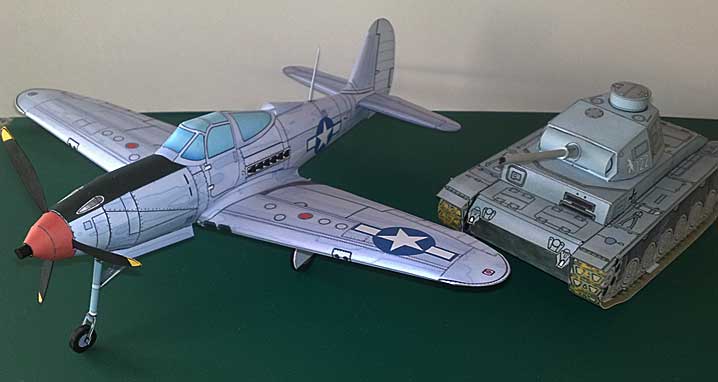 |
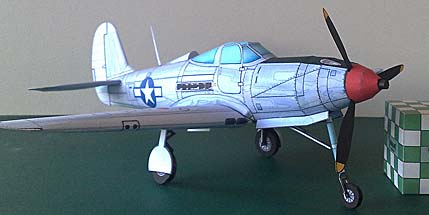 Hello,,Built the P-39, attached a bunch of photos. Hope you like it. Niki Schutt |
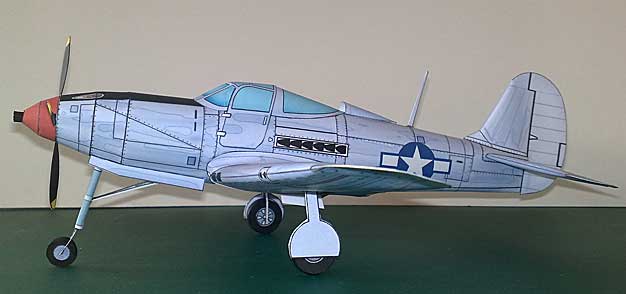 |
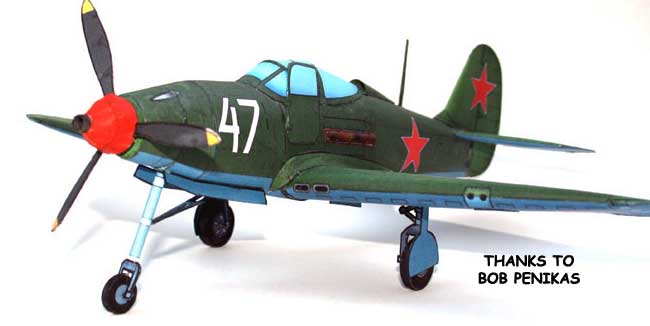 |
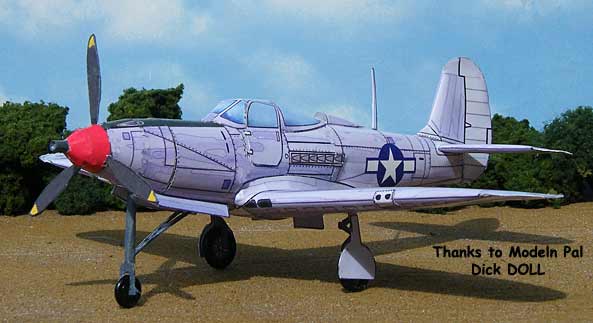 |
|
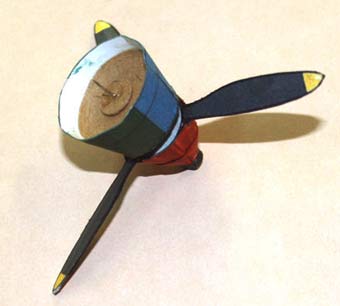 |
These two photos show the method I used to allow the FG P-39 prop to spin freely. Small cardboard discs were added to the nose cowling so that the prop would spin without the blades hitting the cowling. A straight pin was glued to the prop, inserted through the nose piece and through a cardboard disc at the rear of the nose cowling; there a small disc was glued to the pin allowing the prop assembly to spin freely. The short nose cannon was formed by using paper wrapped around a wood dowel, glued, and slid off when dry, then touched up with black water color. |
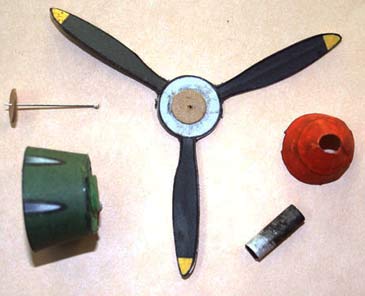 |
|
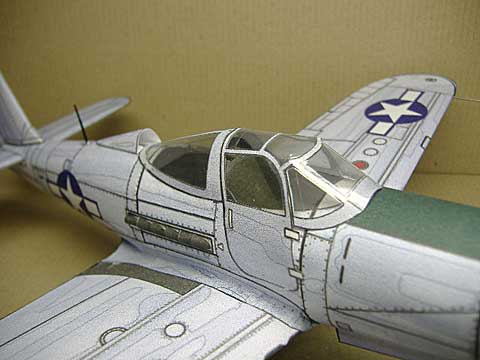 |
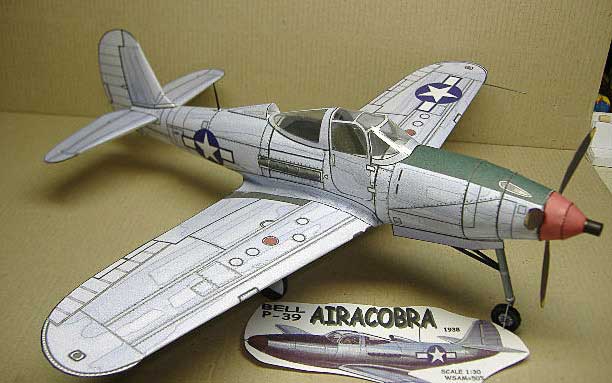 |
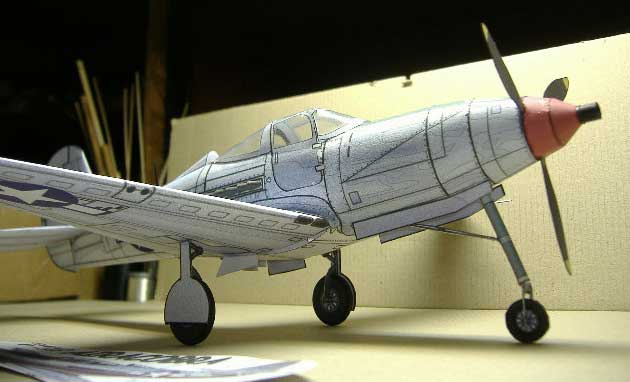 |
Just finished my first Airacobra and thought I'd send you a few pictures. As you may remember I'm the one that does the clear canopies with the 2" clear packing tape. Shortly after I received the CD for the jets I sent you a couple pics and you ask me where I got the clear canopy for the Mig. I've also started trying to detail some of the cockpit interiors. I really enjoy the FG models. You can do alot to dress em up. YMP, Bob (more) |
|
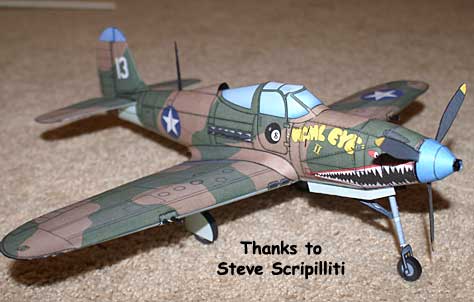
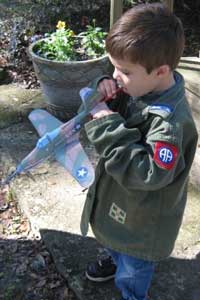 |
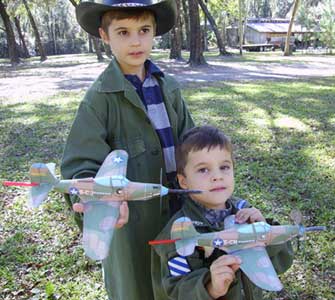 |
Rules of Engagment |
|

For a while there was a considerable amount of ill-feeling before the first and only Squadron to be equipped with the P-39s' No.601 (County of London) Squadron, Royal Auxiliary Air Force-, which became operational in September 1941, had their Airacobras withdrawn from service after flying only four missions over Europe. In the heat of the moment feelings ran high and British disillusionment with the P-39s led to Bell being accused of bad faith, supplying hardware which fell far short of contract specification.
The British decided to dispose of all their disappointing P-39s and 212 Airacobras were ceded to the USSR, some were sent to Australia and, immediately after Pearl Harbor, 179 were bought by the USAAC, by now the USAAF. In spite of this body blow to its operational career, U.S. production and use of the P-39 continued uninterruptedly, with increasingly heavy weaponry and thicker armor, becoming more of a fighter and less of an interceptor as time went on. The installation of a new, more powerful engine was impracticable as there was not enough space in the fuselage.
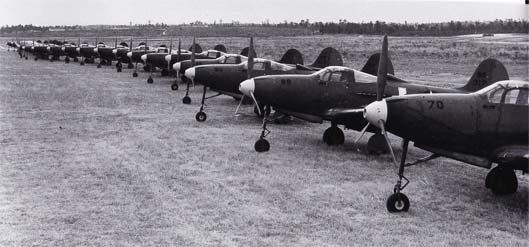 |
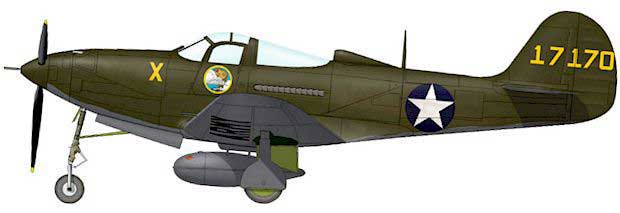 |
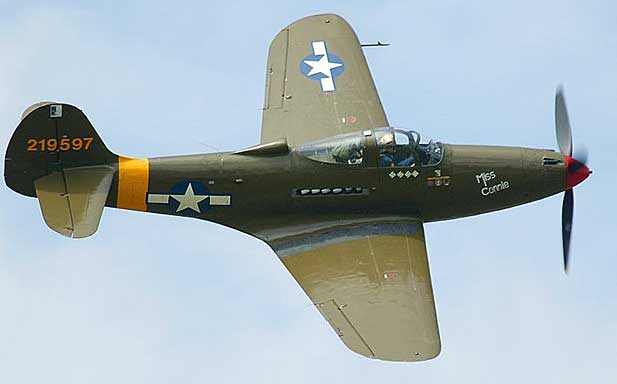 |
A total of 9,585 P-39s left the assembly lines over the course of three years, about half this number (4,773) going to the USSR, where they saw plenty of valuable service as close support aircraft, backing up the Russian infantry. The second most successful Soviet ace of World War II, Alexander Pokryskin, chalked up 20 of his 59 kills in a P-39. The P-39's wartime career with U.S. forces started with the return of Airacobras from Britain under the new designation of P-400 which immediately entered service in the Pacific theater. The USAAF realized that it was almost suicidal to pit P-39s against the Japanese Zero fighters but had no choice until the U.S. war machine had moved into top gear. Once these planes were released to the duties for which they were originally intended, they gave a good account of themselves. P-39s were flown during the battle for the defense of Port Moresby in New Guinea and at Guadalcanal; Airacobras based in Alaska took part in the Battle of the Aleutian Islands; they saw service in Europe during the Allied landings in Tunisia; at Anzio; in Sicily and throughout the Italian campaign as well as proving themselves invaluable on the Russian front.
 This World War II publicity photo of a Bell P-39D Airacobra is not what it seems. The aircraft is supposed to be firing all its guns - six machine guns and a cannon - during a night flight. |
 Actually, the warbird was not flying at all. It was tied down at the test-firing range at the factory. A little artwork transferred the plane from the ground to the night sky. |
Back in the early days of World War II, Bell Aircraft and the U.S. Army Air Forces got a lot of publicity mileage from a spectacular photo of one of the new Bell P-39 Airacobra fighters that was firing its guns at night. As printed in the newspapers and magazines, the picture appeared to be a very close-in shot of the powerfully armed fighter in full flight with all guns blazing. The use of tracer bullets added to the effect. Getting an actual flight scene like this would have taken some doing. A check of the perspective reveals that the camera used a normal lens and was placed quite close to the subject. If the camera were in another plane, the formation flying would have been terrifically close. It would have been tricky enough under the best of conditions, and even more difficult at night, particularly with the subject pilot firing his guns as well as holding formation. As can be seen from the second photo, the flight was a fake and the photographer was safely on the ground. Other than the gunnery, which was real enough, all the "action" was the result of a retouched photo. There was a lot to do, such as blacking out all of the ground details and then removing the landing gear and closing up the nosewheel doors. To get a little more action into the scene, the "flight" picture was tilted a bit. It may be confusing to those who come across this shot in old magazines to find it credited to two sources. The manufacturer released it, with the military censor's approval, and got the proper credit lines in various publications. The Air Force made copies of the photo and released them on its own, so other prints appear as "Official Photo U.S. Army Air Force" even though it was not an original Army photo ' .Much can be written on the subject of incorrect photo credits. As is to be expected from any new and successful gimmick, it was soon copied, and both Lockheed with its P-38and Republic with its spectacular eight-gun P-47 were soon out with "night flight" shots of their own. |
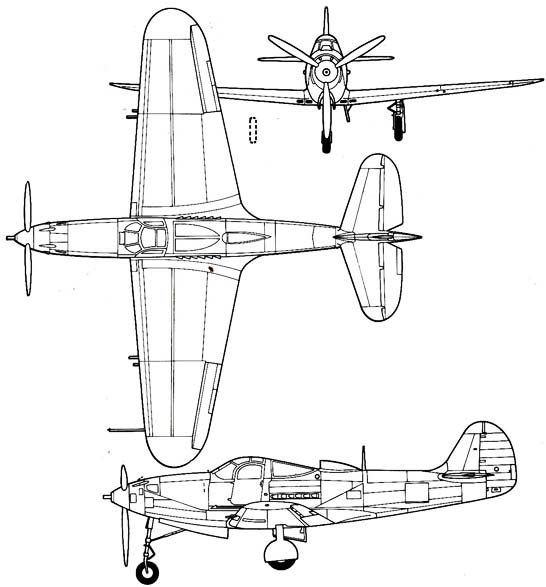
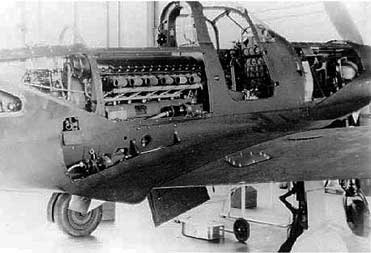 The unique mid-mounted engine not only allowed heavy nose armament to be carried, but also gave the pilot protection from the rear. Additionally, with the engine close to the center of gravity, the tough little fighter was clearly more agile. A ten foot steel shaft connected the engine to the prop going right below the pilot. |
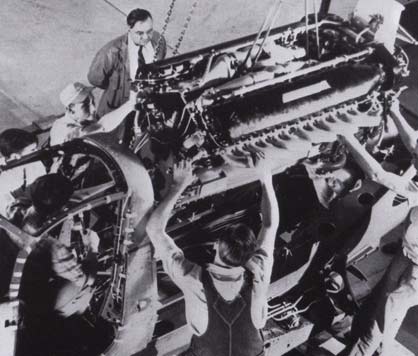 |
Entry was easy and bailing out even MORE so !! Because with one swift pull of a handle the hinge pins for BOTH doors retracted allowing the doors to fly off. The pilot had only to roll out onto a wing and fall clear of the tail. |
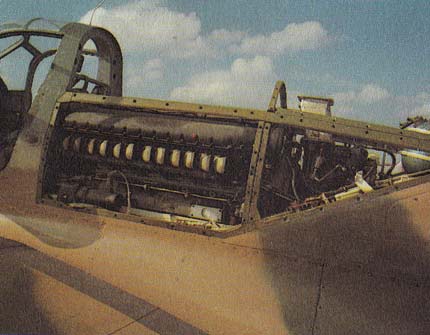 |
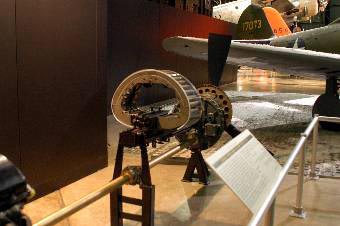 P-39 Airacobra Drive Train Details |
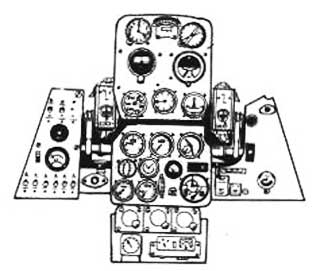 Bell P-39 instrument display |
|
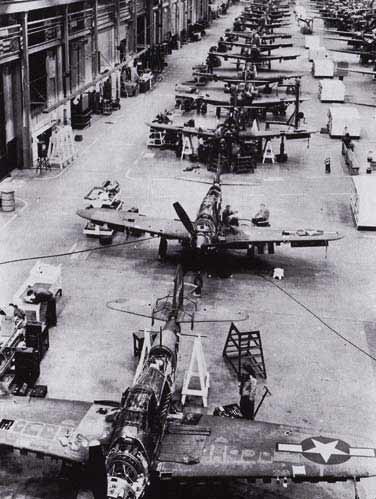 |
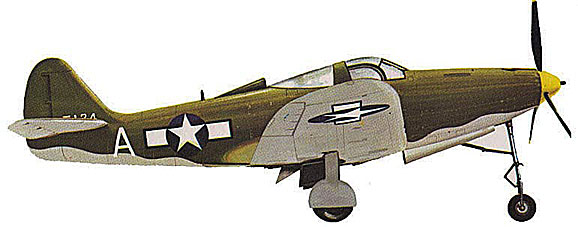 |
|
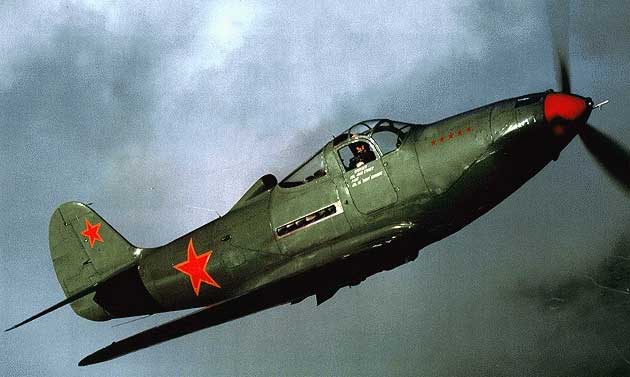 |
|
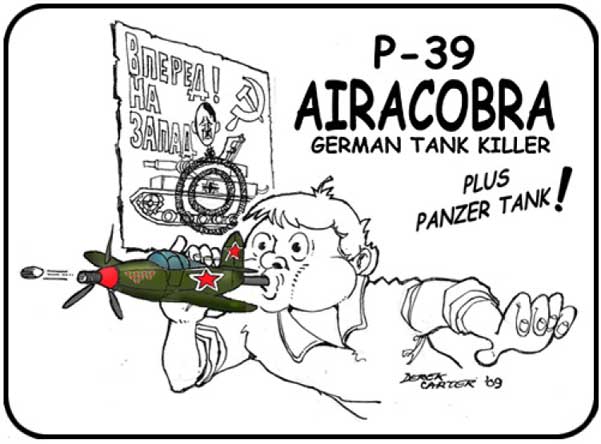 |
|
 Installing a spit-ball cannon is as easy as finding a straw and running it up through your Airacobra's fuselage. More instructions included with model. |
|
 This is a cross section of the P-39 Bell Airacobra |
|
 P-39 Bell Airacobra - version Russian |
 P-39 Bell Airacobra - Tunisia version |
 P-39 Bell Airacobra - RAF version |
 P-39 Bell Airacobra - New Guinea version |
 P-39 Bell Airacobra - Italian version |
 P-39 Bell Airacobra - New Russian version |
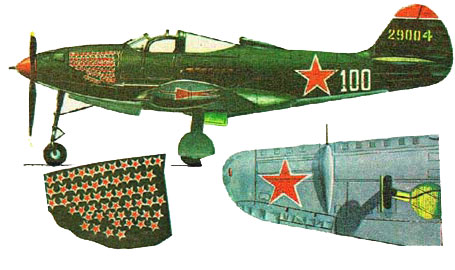 P-39 Bell Airacobra - Soviet version |
This table is for general information. Not all versions shown above are in your folder. |
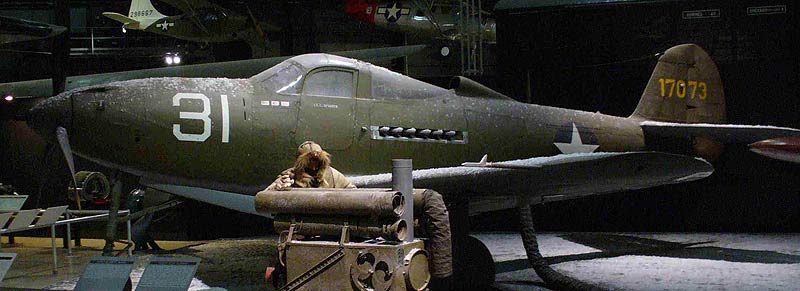 |
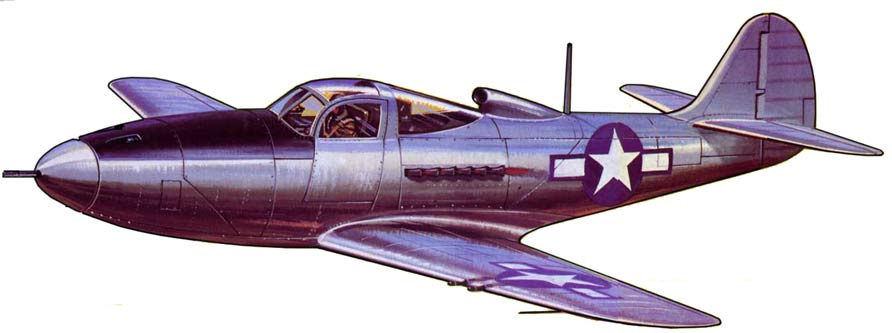 |
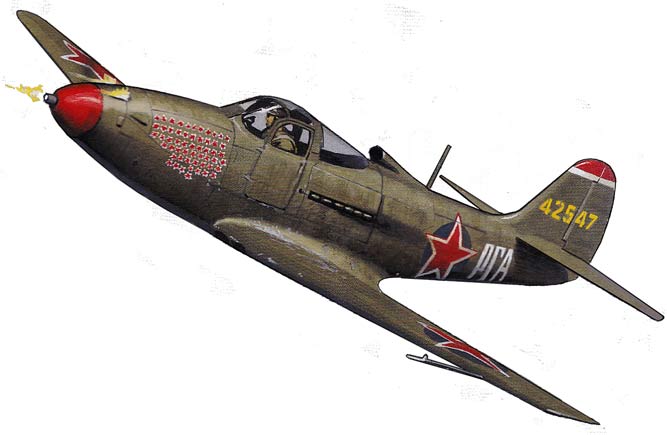 |
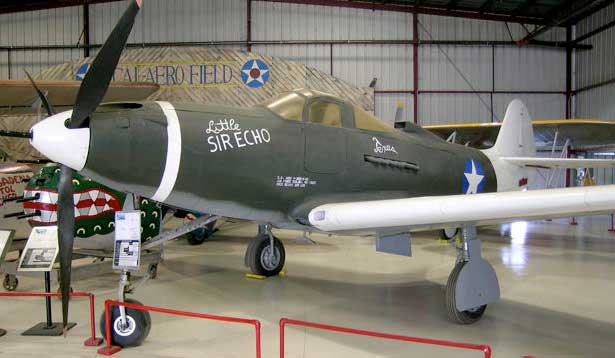 |
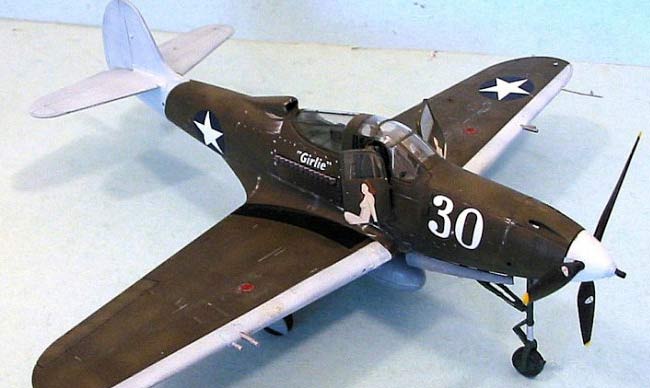 |
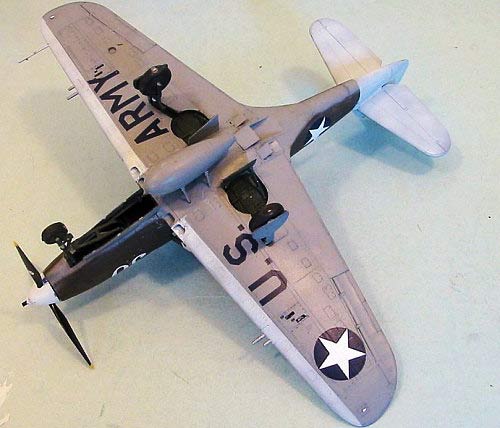 |
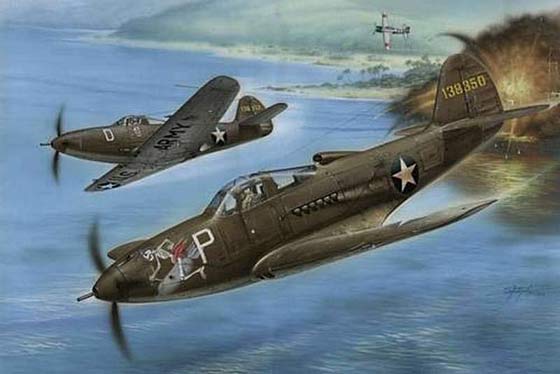 |
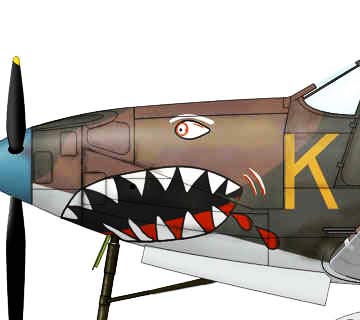 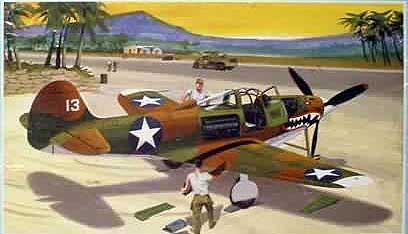 |
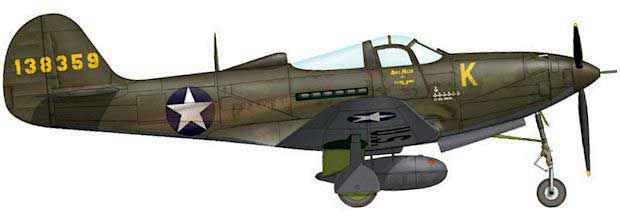 |
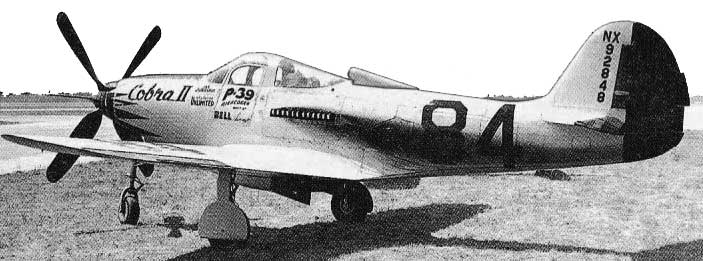 |
 Syle of letters for many tail P-39 vertical tails |
Bob Martin shows us how to make clear canopies using cheap Packing Tape
First off the tape is sticky packing tape about 2" wide. I get it at the Dollar store for a Buck. The tape is put on both sides of the canopy frame. The first thing I do is to print the sheet that has the canopy on it, on regular typing paper. Because the tape goes on both sides of the canopy, this reduces the separation of the tape around the canopy frame. I'm using the FG Mig 15 for this tutorial because it is one of the more easy ones to start with. And also because the vast majority of my models are from FG. Fairly easy to build and realitively inexpense to build. Thus I was looking for a way to build them with an inexpensive canopy.
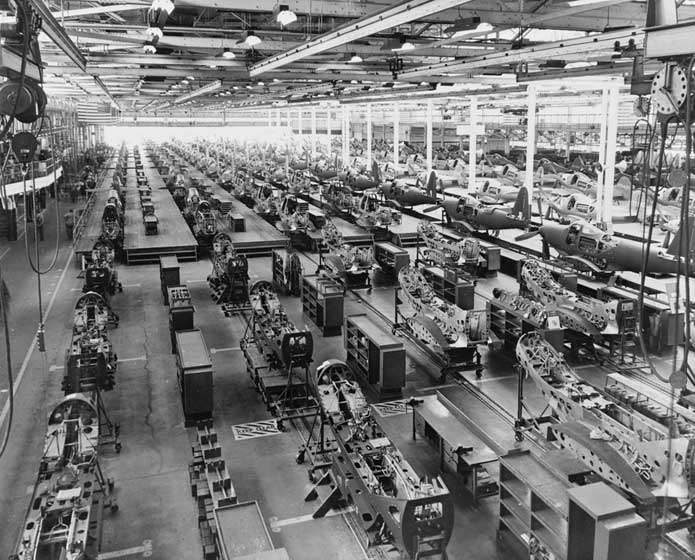
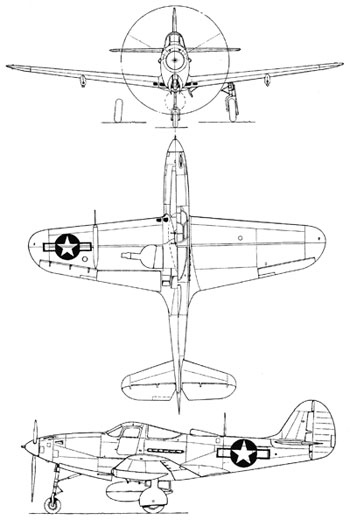 |
Length: 30 ft 2 in Wingspan: 34 ft Height: 12 ft 5 in Wing area: 213 sq ft Empty weight: 5,347 lb Loaded weight: 7,379 lb Max takeoff weight: 8,400 lb Powerplant: 1× Allison V-1710-85 liquid-cooled V-12, 1,200 hp Performance Maximum speed: 376 mph (Redline dive speed was 525 mph) Range: 525 miles on internal fuel Service ceiling: 35,000 ft Rate of climb: 3,750 ft/min Wing loading: 34.6 lb/sq ft Power/mass: 0.16 hp/lb Time to climb: 15,000 in 4.5 min at 160 mph. Armament Guns: 1 x 37 mm M4 cannon with 30 rounds of HE ammo. 2 x .50 cal (12.7 mm) machine guns. 200 rounds per nose-gun 4 x .30 cal machine guns, wing mounted. 300 per wing-pod Bombs: Up to 500 lb of bombs externally |
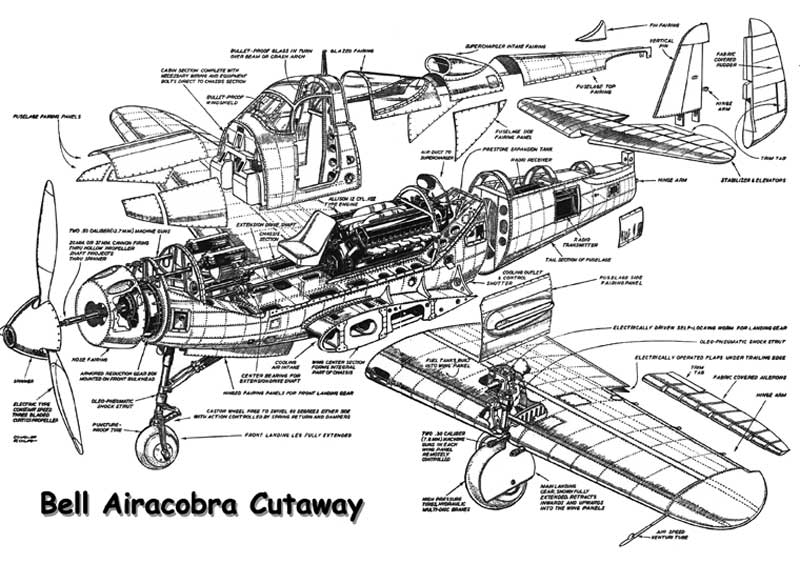 |
This wonderful cutaway is available in full size 8.5x11 PDF for FREE in your MyModels folder. |
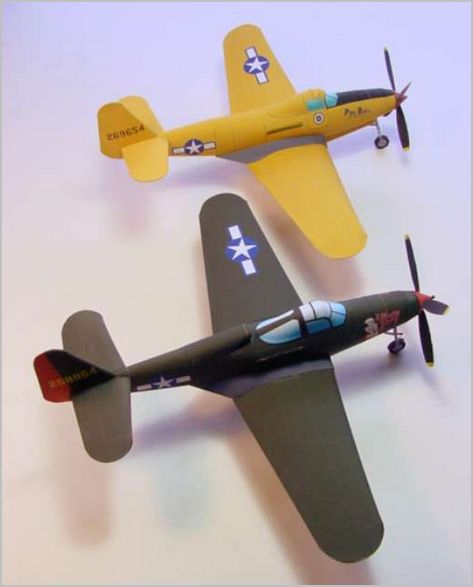 |
These two new Kingcobras (Bell P-63 and RP63) from Aaron Murphy are now in your MyModels folder. |
